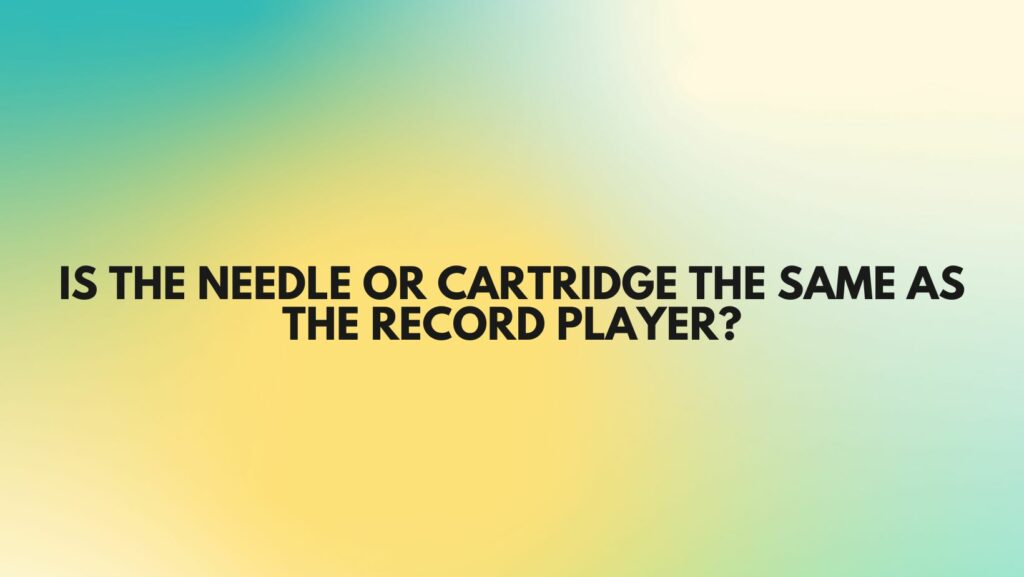In the rich tapestry of analog audio, the terms “needle,” “cartridge,” and “record player” are often used interchangeably, leading to confusion about the distinct roles each component plays in the creation of the harmonious sounds emanating from vinyl records. In this article, we delve into the nuanced differences between the needle, cartridge, and record player, shedding light on their individual functions and dispelling common misconceptions about their interchangeable usage.
1. The Record Player: The Maestro of Analog Playback:
The term “record player” serves as a broad descriptor encompassing the entire playback system for vinyl records. It comprises several interconnected components, each with a specific role in reproducing the recorded sound. Key elements of a record player include:
- Turntable: The rotating platter where the vinyl record is placed for playback.
- Motor: Drives the turntable’s rotation at a consistent speed.
- Tonearm: A pivoting arm that supports the cartridge and stylus, allowing them to traverse the record’s grooves.
- Phono Cartridge: The housing that holds the stylus and translates its movements into electrical signals.
- Stylus (Needle): The tiny, diamond-tipped component at the end of the tonearm that makes direct contact with the grooves on the record.
2. The Needle (Stylus): The Precision Navigator:
The needle, commonly known as the stylus, is a minute but crucial component responsible for physically contacting the grooves on a vinyl record. Its primary functions include:
- Contacting the Grooves: The stylus navigates the intricate grooves of the record, capturing the microscopic variations in its surface.
- Transducing Mechanical Motion: As it moves along the grooves, the stylus transforms mechanical vibrations into electrical signals.
- Stylus Profile and Materials: Styluses come in various shapes and materials, each influencing the quality of audio reproduction.
3. The Cartridge: The Sonic Translator:
The phono cartridge is a small but intricate device that houses the stylus and facilitates the translation of its movements into electrical signals. Its key functions include:
- Stylus Housing: The cartridge encapsulates and supports the stylus, maintaining stability during playback.
- Signal Generation: The stylus’s movements within the cartridge generate electrical signals, representing the audio information encoded on the record.
- Channel Separation: Cartridges often have separate channels for left and right audio signals, contributing to stereo imaging and fidelity.
4. Clarifying the Terminology:
While the terms “needle” and “cartridge” are often used interchangeably, it’s crucial to recognize their distinct roles within the broader context of the record player. The needle, or stylus, is the fine point of contact with the record, while the cartridge serves as the housing that translates its movements into electrical signals.
5. The Analog Ensemble:
In essence, the record player is an ensemble of components working harmoniously to recreate the music engraved on vinyl. The turntable, tonearm, cartridge, and stylus collaborate in a delicate dance, bringing the auditory magic of vinyl records to life.
Conclusion:
Understanding the differences between the needle, cartridge, and record player is key to appreciating the intricate workings of analog audio playback. While the terms may seem interchangeable, each component plays a unique role in the orchestration of the analog symphony, ensuring that the sounds encoded on vinyl records resonate with clarity and precision in the world of audiophiles.


